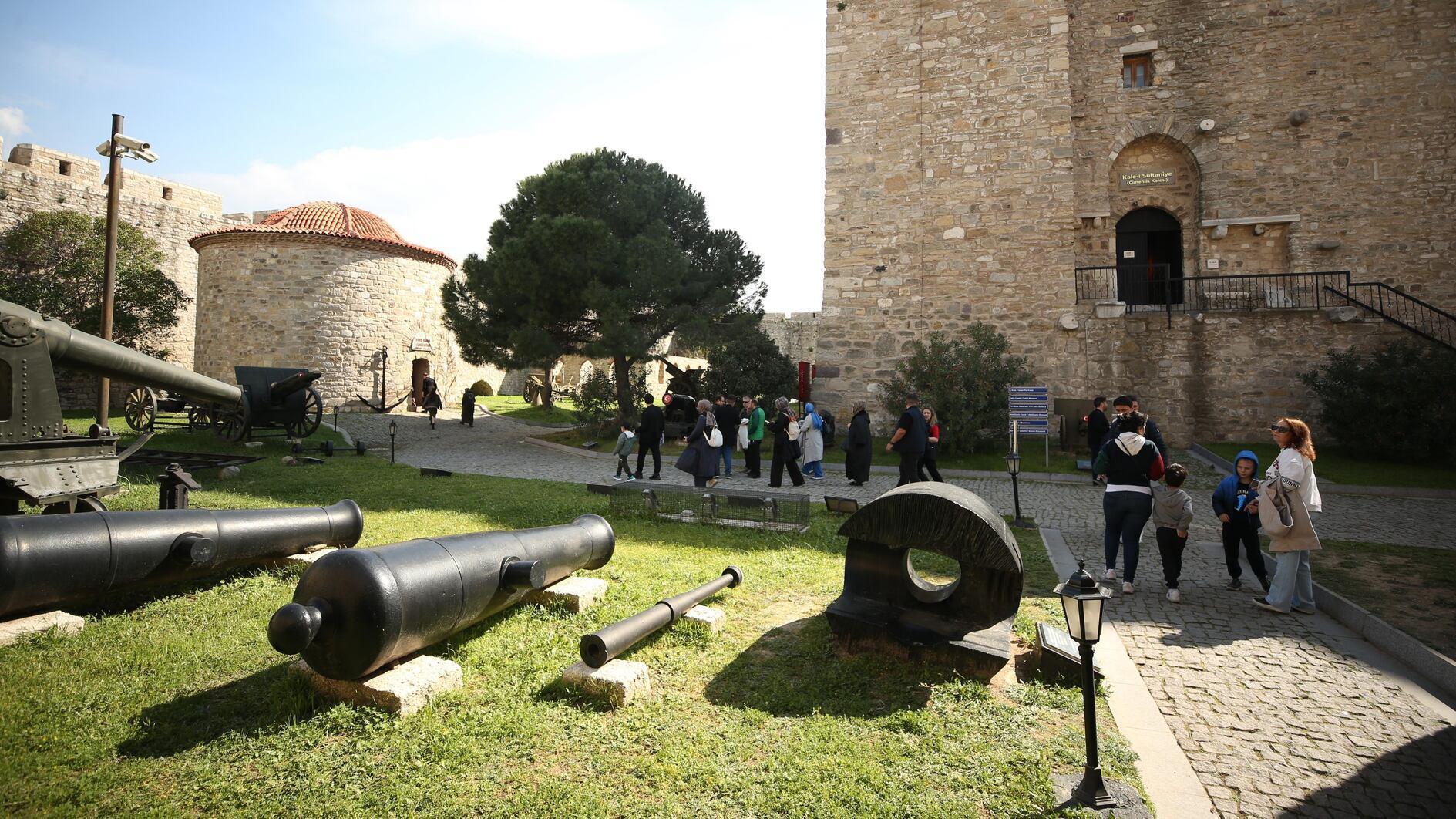
The Çanakkale Naval Museum complex, one of Türkiye’s premier curated spaces for military heritage, offers visitors a vivid, immersive journey through Turkish maritime history.
It stands out with its dynamic exhibition techniques, incorporating life-like wax figures, interactive displays, animation, sound design, music and strategic lighting to breathe life into the past.
The complex, spread over 72 acres, includes the storied Çimenlik Fortress — commissioned by Sultan Mehmed the Conqueror in 1462-63. Its thick stone walls, once charged with the defense of Dardanelles, also carry the intellectual legacy of Piri Reis, the famed Ottoman admiral and cartographer, who wrote parts of his seminal maritime guide “Kitab-ı Bahriye” here. His presence is felt not only through displayed manuscripts but also through a striking lifelike figure beside Sultan Mehmed II.
The museum’s heart beats strongest during its retelling of the Gallipoli Campaign. Among the museum’s most compelling artifacts is a periscope rifle, developed during the brutal trench warfare of the campaign to allow soldiers to fire without exposing themselves above the trenches.
Also on display is a rare “kukri,” the distinctive curved dagger used by Gurkhas and Indian troops fighting for the Allied Powers.
An evocative centerpiece is a photograph of Mustafa Kemal Atatürk taken by Staff Officer Haydar Mehmet Alganer at Düztepe during some of the campaign’s fiercest moments. Accompanied by Alganer’s wartime diary, the image reflects Atatürk’s resolute presence and strategic foresight. The photograph is reimagined in a compelling diorama, featuring a lifelike sculpture of the future founder of Türkiye.
The museum’s approach to storytelling includes audio recordings of Gallipoli veterans Mehmet Oral and İsmail Ovalıcalı, recounting their wartime experiences in their own voices.
As visitors ascend the fortress, they enter a gallery dedicated to the sweep of Turkish naval history — from the founding of the first fleet under Emir Çaka in 1081 to the innovations of the Turkish Republic.
A dedicated section is reserved for one of Turkish naval history’s most iconic figures: Grand Admiral Barbaros Hayrettin Pasha. Meanwhile, Binbaşı Nazmi Bey’ meticulously kept wartime diaries, featured prominently, offer day-by-day insights into the harrowing reality of the Gallipoli Campaign.
One of the museum’s most fascinating displays features bullets that collided mid-air — an event with a probability of 1 in 160 million — showcased under a magnifying glass.
In the outer courtyard lies an enormous shell from the British battleship, HMS Queen Elizabeth, which struck Çimenlik Fortress on March 18, 1915.
The Binbaşı Nazmi Bey Art and Exhibition Hall, built in 1927, houses a rotating gallery. Its current exhibition, “The Navy of the Republic,” traces the development of Türkiye’s naval forces.
The museum also features the TCG Nusret N-16 — a faithful replica of the legendary minelayer that changed the course of the campaign. Alongside it are the Uluçalireis, Türkiye’s first submarine museum, and the historic Acar and Kartal vessels.
Established in 1982 and officially recognized in 2002 as a first-class military museum, the Çanakkale Naval Museum welcomes nearly 450,000 visitors annually.